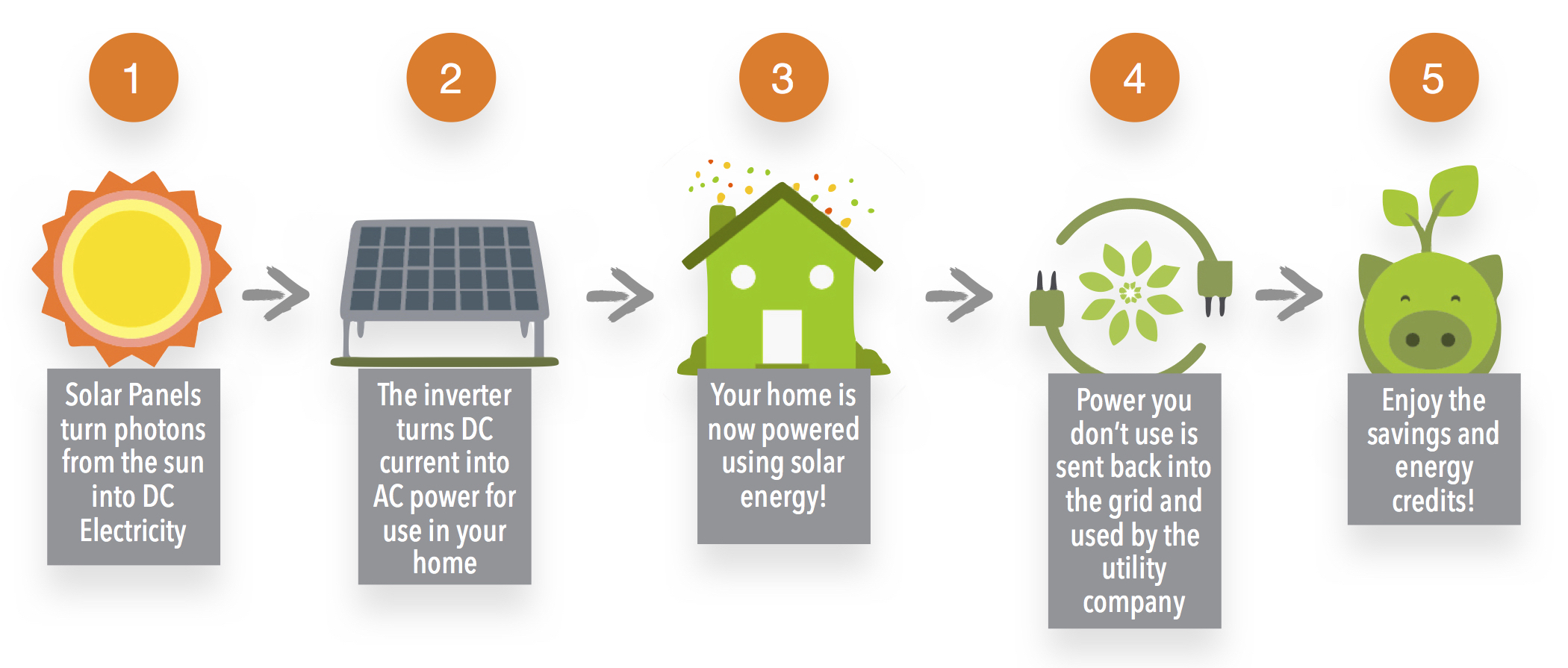How do solar panels work?
How do solar panels work?
Solar energy works by capturing the sun’s energy and turning it into electricity for your home or business.
Photovoltaic (PV) solar panels are made up of many solar cells. Solar cells are made of silicon, like semiconductors. They are constructed with a positive layer and a negative layer, which together create an electric field, just like in a battery.
Here’s an example of how a home PV Solar System works: First, sunlight hits a solar panel on the roof. The panels convert the energy to DC current, which flows to an inverter. The inverter converts the electricity from DC to AC, which you can then use to power your home. It’s beautifully simple and clean, and it’s getting more efficient and affordable all the time.
Benefits of using solar panels
Residential solar panels are easy to install on rooftops or on the ground without any interference to residential lifestyle.
Take advantage of government subsidy funding (FITs, tax credits etc.) as financial incentive for your PV Solar System.
Solar energy is energy supplied by nature – it is free and abundant!
Facts about solar panels
A typical grid-tied PV system, during peak daylight hours, frequently produces more energy than one customer needs, so that excess energy is fed back into the grid for use elsewhere. The customer gets credit for the excess energy produced, and can use that credit to draw from the conventional grid at night or on cloudy days.
Our sun is a natural nuclear reactor. It releases tiny packets of energy called photons, which travel the 93 million miles from the sun to Earth in about 8.5 minutes. Every hour, enough photons impact our planet to generate enough solar energy to theoretically satisfy global energy needs for an entire year.
A 2017 report from the International Energy Agency shows that solar has become the world’s fastest-growing source of power – marking the first time that solar energy’s growth has surpassed that of all other fuels. In the coming years, we will all be enjoying the benefits of solar-generated electricity in one way or another.


